Installing a gas boiler in an apartment in an apartment building: what does the legislation say?
Central heating does not always suit apartment owners and many dream of autonomous heating. But not everyone knows that installing a gas boiler in an apartment in an apartment building is not just a dream, but a very real possibility.
Is it hard to believe or not at all? Then we will now tell you everything in detail and explain how to implement independent heating in your apartment, what documents are needed for this, how to prepare the premises and in what cases it is still impossible to gasify the apartment.
The content of the article:
Regulations, laws and regulations
Let's immediately look at what decrees regulate such connections at the legislative level. They will help you implement your plans without problems with local authorities, without danger to health and life, and, moreover, with minimal waste of time and money.
You will need for review:
- SP 60.13330.2016 - “Heating, ventilation and air conditioning.”
- SP 62.13330.2011/SNiP 42-01-2002 — here we talk in detail about gas distribution systems.
- SP 41-108-2004 — a document on apartment-by-apartment heat supply using gasification.
- SP 402.1325800.2018 — “Rules for the design of gas consumption systems.”
And of course, general research into the documentation of your apartment building is necessary.
Number of storeys and other requirements for gasification
So, you have patience and you have the financial opportunity to install autonomous heating in your apartment.
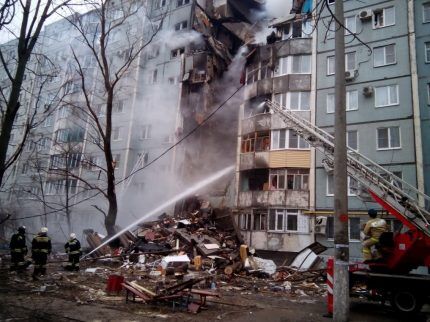
First of all, you should clarify which floor you live on. Previously, there were restrictions on gasification from 5 to 9 floors in various legislative acts. Now we can safely take SP 402.1325800.2018 for consideration and in it we see in paragraph 5.18 the requirements for apartment-by-apartment heat supply in residential buildings up to 28 meters high.
If you want to argue with this act, you can try, but in any case, you will need to agree on safety standards with the Ministry of Emergency Situations and other departments, the positive outcome of which is doubtful.
The Technical Regulations for the Safety of Gas Equipment state that the supply of “blue fuel” is possible only if fire safety is ensured, which includes the ability to quickly respond technically to ignitions. And although this document was canceled, its requirements are quite reasonable.
Indeed, the technical ability to quickly extinguish fire on floors above 10 is not possible in every city. Not every roof is equipped with a helipad, not to mention the fact that it is unprofitable to provide gasification in high-rise buildings under construction for various reasons.
But this is a completely separate conversation; the main thing we found out is that the number of storeys in your house should not exceed 28 meters.
Premises for gas-using equipment
Now let's talk about the room itself and the requirements for it. This is necessary in order, again, to avoid unnecessary actions, because if your premises do not comply, there is no point in arranging for gasification.
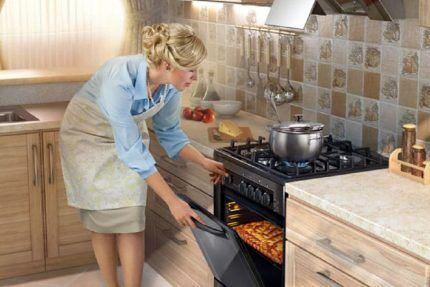
There is no need to rummage through a pile of papers, just look at Rules for the design of gas supply systems SP 402.1325800.2018. These are the latest gas supply design rules by date of issue, which, although included in the list of voluntary use, comply with all the requirements of the Technical Regulations for the Safety of Buildings.
In order not to bother yourself, you will still have time to study SP 402.1325800.2018 in detail, immediately look at part 5 “Requirements for premises...” and find the section “Apartment buildings”. In the first paragraph (paragraph 5.16) we see that the installation of gas stoves in kitchen niches is strictly prohibited.
Kitchen niche - by definition from SP 54.13330.2011 - this is a room or part of it that does not have a dining area and is used for preparing food. The equipment in it includes an electric stove and supply and exhaust ventilation. In a broader sense, the kitchen area somehow communicates with rooms for other purposes.
Let's return to the other requirements, they are the same as in single-apartment buildings, so we look at paragraph 5.1 and see that, again, gas stoves must be installed in kitchens (in 5.16 these are exactly them), with a height of 2.2 m, volume from 8, 12, 15 cubic meters for 2, 3, 4-burner stoves, respectively.
Must be provided ventilation hood, a window with a window for ventilation and a gap at the bottom of the door of 0.02 cubic meters. meters of area. For boilers, the requirements are the same and do not forget that individual heat generators must have an area of 15 cubic meters.
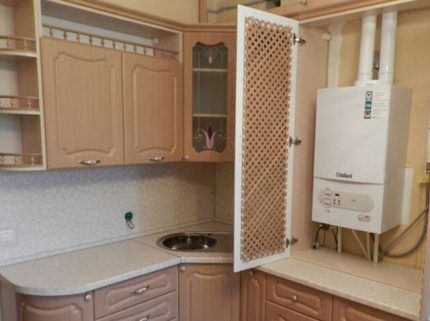
For reference, a heat generator room is a non-residential premises in which equipment for supplying thermal energy and auxiliary devices are planned or already located. This applies to gas-using devices - stoves, columns, boilers.
Let's continue about boilers. So, a gas boiler in the apartment, instead of the existing central heating, with a power of up to 50 kW, you can place it in the kitchen, corridor passage, in a non-residential room (except for those with high humidity - these are saunas, bathrooms, toilets).
If the power of the device in combination with others is higher, but does not exceed 100 kW, a separate boiler room will be required. Please note that, again, there should be no living quarters in the apartments above or below.
Standards for distances and structures
We talked about the placement of the boiler room, the height from floor to ceiling, now we will discuss the room itself, where a gas boiler can be installed in the apartment, what distances to gas-using equipment must be maintained and what other structures should be in the room.

However, there are also mandatory standards. For example:
- Speakers and boilers with wall mounting must be installed on surfaces with fireproof material or fenced with special tempered glass and at a distance from the walls of at least 3 cm.
- Wood floors or floors with a wood finish are not allowed for installation of gas-using equipment unless they are covered with insulation up to 10 cm beyond the located equipment with fire-resistant material.
- The horizontal distance from the stove to the heating equipment is taken to be 10 cm.
However, equipping heating devices in accordance with these requirements will not be so difficult. It’s much more difficult to think through a hood and a window.
Exhaust ducts and window structures
Let's start with the fact that if you plan to place any gas-related equipment, ventilation should be of a natural type.
The hood is equipped with the calculation of threefold air exchange with the same influx and additional air supplied to support combustion. The air supply to the boiler is carried out through a separate channel.
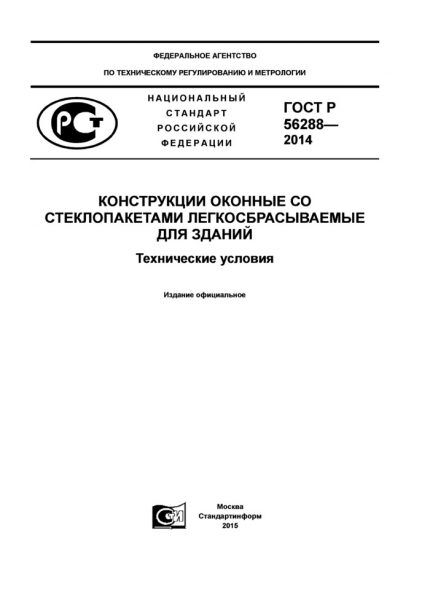
As for the window, it should be an easily removable structure. Volume - 0.03 sq. meters per 1 cubic. meter of room volume. And the door leading from the room should open outward.
And, of course, don’t forget about installing the IPU.
Separately, there are also mandatory recommendations on smoke ducts and ventilation, which you will find all in the same SP 402.1325800.2018.
Nuances of gasification of an apartment building
Process gasification of apartment buildings can be autonomous or centralized.
In the first option, fuel is taken from the common pipeline, and in the second, the supply comes from special tanks that supply and store the gas resource, called gas holders.
The installation of gas tanks is unlikely in densely populated neighborhoods with apartment buildings, since the following conditions must be met during their implementation:
- Possibility of passage of vehicles for servicing tanks.
- The distance from any residential facilities is at least 10 meters, from fences - at least 2 meters, from other buildings - from 5 meters.
- From reservoirs, wells and other wells - 15 meters.
With centralized gasification, all requirements have already been met.

Of course, there are many more nuances depending on the specific location of the house, its structural structure, and so on. You can check this information with your local government.
Gas for new buildings
When arranging gas supply in a new building, whatever it may be, if gasification is not initially provided for, it is necessary to hold a meeting of residents who have rights to residential premises in a particular house. At the meeting, minutes are drawn up showing the number of people present, the topic of the meeting, the decision and the voting results.
If not everyone agrees, but the majority of residents vote “For,” the decision is made in favor of the majority. Then you need to visit the administration and find out about the possibility of gasification, according to the planning scheme.

Next, the chairman of the meeting takes the minutes to the housing and communal services department along with an application for gas connection. The issue is referred to the designer or a separate specialized organization.
A project is drawn up and then gasification of the house takes place if there is such a technical possibility. For autonomous gasification of individual apartments, the scheme is slightly different.
Procedure for registration of gasification of an apartment
First of all, it would be a good idea to find out whether it is even possible to gasify residential buildings in your apartment building or whether there is no such technical possibility. This can be done at the local management company and state registry office.

A preliminary conversation is needed in order not to waste time collecting documentation and going to authorities, if it is still unrealistic to do this.
After receiving approval, you will need to gather the residents and get a positive decision from them with the minutes of the meeting.
Let's look at the Housing Code of the Russian Federation. It contains all the points concerning the nuances of reconstruction of residential premises, starting with Article 25. Gasification is a reconstruction, as it relates to engineering communications, the change of which requires inclusion in the technical passport of the residential premises.
Work is carried out, in accordance with the law, at the expense of the owners of residential premises. That is, from the gas inlet to the in-house gas equipment, if your region does not provide any preferential program, you fully pay for all communications and work. As well as design, construction, installation and commissioning activities, re-equipment of existing heating networks.
Next, you need to go to the local government and write an application for reconstruction, as well as obtain approval for gasification of the apartment with the management company.
After this, you need to submit an application for technical specifications to the local gas distribution organization that services highways in your area. Do not forget to also obtain the consent of the owner of the gas pipeline.
On a contractual basis, an organization that has a license for this type of work should be entrusted with checking the chimney and ventilation systems, as well as their arrangement or reconstruction.
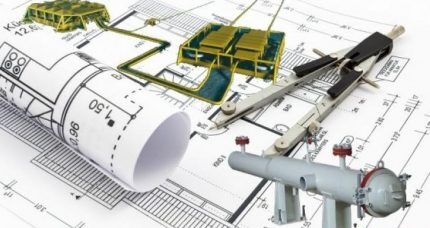
The project and estimate work are being developed, after which it is necessary to write an application to the local heating network to disconnect from the general heating and hot water supply.
Purchasing equipment for gas use is a very important and responsible moment. You can’t just go out and buy the first stove or boiler you come across that matches the color of your handbag. Devices must comply with the requirements of SP and GOST.
After all this is ready, specialists install gas pipeline pipes and install in-house gas-using equipment according to the approved design.
The next step is installation metering devices, as well as signaling devices, in accordance with SP 402.1325800.2018. When everything is established, a series of contracts for servicing gas-using equipment and for gas supply are concluded between the gas supply organization and the applicant.
Gas is approved for operation and tested, and safety instructions are provided to the owner.
Here, perhaps, are all the stages that need to be completed on the path to gasification of an apartment.
Prohibitions for owners of gasified apartments
Once you have autonomous heating at your disposal, you shouldn’t think that you can now use gas as you please. There are certain restrictions and prohibitions.
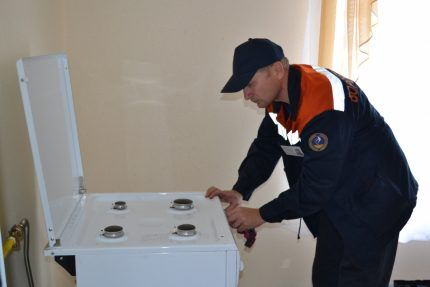
For example, it is strictly forbidden to carry out unauthorized gasification. What this includes is the output of gas pipes to local gazebos, garages, sheds, basements, and so on. Connecting equipment not registered with the State Register, even if you just want to exchange one device for another.To do this you need to invite specialists.
You cannot remodel a room into which gas is supplied without prior approval. It happens that after the devices are installed, people begin to remove temporary partitions.
Don't think that such a trick will go unnoticed. At the next maintenance, your ingenious design may be destroyed. SP and SNiPs regulating the installation of gas boilers in an apartment are not canceled after installation of the devices.
It often happens that users turn off automation and alarms if they are triggered by an equipment malfunction. It is not recommended to do this under any circumstances; remember that you are risking not only your property, and most importantly your life, but also other people, since you live in an apartment building.
Another reasonable requirement is that you cannot leave devices that are not designed for long-term burning unattended during your absence. We are, of course, talking about gas stoves and switched on instantaneous water heaters, even if they are equipped with an automatic emergency shutdown. After all, we are talking about explosive and flammable gas fuel.
Gas should not be used for other purposes (household appliances). Yes, and it is prohibited to sleep in boiler rooms; after all, it’s not for nothing that these rooms should be of a non-residential type.
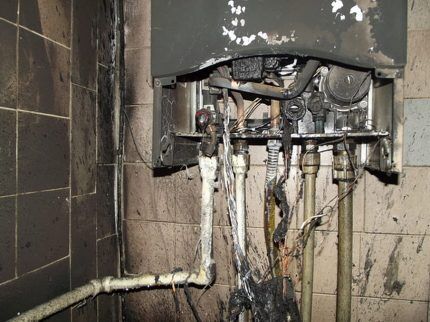
In general, each owner of a gas distribution facility must be instructed regarding their rights and obligations before placing the gas pipeline into operation.
Responsibilities of the owner of a gasified apartment
If you have become the happy owner of an autonomous heating apartment, remember that you have not only prohibitions, but also responsibilities. You are required to follow the rules for using gas at home.
Among them:
- the need to carefully study the instructions for using gas-supplied devices;
- carefully monitor the optimal functionality of all devices, chimneys and ventilation ducts;
- carefully ensure that the draft is at the proper level and periodically clean the smoke exhaust duct;
- immediately report to the gas distribution department about all problems that arise with the equipment under control, in particular about possible leaks outside the apartment on the gas supply;
- in the event of a sudden loss of gas supply, close all valves on the burners and supply pipes, call 04 to clarify the reasons;
- at any time of the day, allow gas distribution department employees to inspect equipment when a signal is sent to their office about a possible emergency;
- admit specialists for maintenance and inspections;
- timely pay for the resources received according to the indications of the IPU;
- Keep children away from operating gas appliances.
Among other things, when leaving for more than a month, you must notify the gas service and leave them your current telephone number for contact in the event of a malfunction on the line.

The requirements are not so complicated; it won’t be difficult to comply with them, and it will also ensure your safety.
Conclusions and useful video on the topic
What to do if there is a gas leak in the apartment:
Thus, the question of whether it is possible to install a gas boiler and related equipment in an apartment can be answered positively. But for this you need to have suitable technical conditions, the necessary documentation, be patient and go through all these stages.
Many apartments in Russia have autonomous heating, so you also have a chance to get this opportunity.
Have you gasified your apartment? Maybe you are planning or are categorically against such actions within the MKD? Write your opinion in the comments, and also ask questions that interest you.




Very useful article, how much will it cost to install gas in your apartment on the ground floor?
I consider it reckless of the Administration and the Management Committee to install IGK on a voluntary-compulsory basis in an apartment building that is 47 years old. And over the years, not a single MAJOR repair has been carried out, and no current repairs have been carried out either, except for patches on the roof, after which the leaks become even worse. All engineering networks have long been physically and morally worn out. There are problems with water supply: during the day there is water, sometimes there is no water, and sometimes people live without water for several days. Kitchens in apartments are 6 sq.m., some are even smaller. It turns out that instead of a kitchen there will be a boiler room. I think this is vandalism, renovation of apartments after their reconstruction is now at the expense of the owner. Both the maintenance and all responsibility for their equipment rests with the owner. Lawlessness and truth cannot be found, because in our country the one who has more rights is right.
It is strictly forbidden in linear apartments!!! There is no sufficient air exchange there, no matter what air intakes and exhausts you make! there must be natural ventilation, which is impossible in a linear apartment. And carbon monoxide will not rise into the hood - it is heavy enough for this. Moreover, modern boilers, especially floor-mounted ones, are made deliberately in violation of GOST standards! Why is this done - and why is it “snot” and war?...a small firebox, lack of draft in the boiler itself (the draft should not be checked with a match, but with a piece of paper to the place where the boiler takes air for combustion), even the gas supply to the burner is interrupted. “Specologists” and “engineers” do not know Bernoulli’s law and they don’t want to know. Carbon monoxide simply does not rise up the chimney, but it is formed when carbon dioxide is heated above 150 degrees. Just when methane burns, carbon dioxide + water is formed. This is the “smoke” that comes from the chimney. But if the state regulations are violated, with a large aerodynamic resistance of the boilers (efficiency 90 percent), this carbon dioxide simply burns there, and since the draft inside the boiler itself has been removed, carbon monoxide there is hundreds of times higher than normal. In this case, you won’t even see “smoke” from the chimney. The carbon monoxide molecule consists made of two atoms, it will not rush upward with joy, but it will rush much easier for gas, since gas behaves like water. And then you don’t have proper air exchange in the linear quarter....screw you, comrades, 300 percent. this has all already been tested, unfortunately , from personal experience. And it costs a lot of loss of health and money. Don’t listen to the advice of illiterate shabashniks - “engineers”. In our country, naked idiots with a smart look like to “understand” everything.